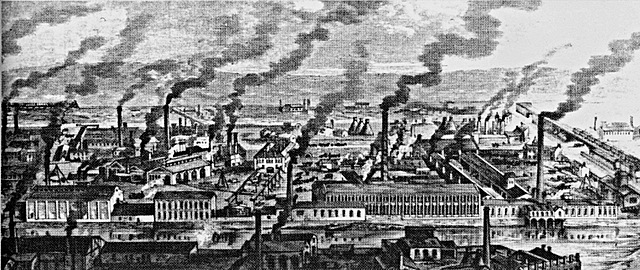Warfare of WWI |
| Introduction |
| Trench Warfare |
| New Weapons |
| Industrialization |
| Total War |

-
Mass Production: The demands of a prolonged conflict necessitated the mass production of weaponry, ammunition, vehicles, and other supplies. Industrialization allowed nations to mobilize their economies and shift towards war production. Factories were repurposed to manufacture armaments and equipment in large quantities. Assembly lines and standardized production techniques streamlined the manufacturing process, resulting in a rapid increase in output. Nations such as Germany, the United Kingdom, and the United States harnessed industrial might to equip their armies and sustain the war effort.
-
Weaponry and Technological Advancements: Industrialization played a pivotal role in the development and deployment of new weapons and technologies. Firearms, artillery, and explosives underwent significant improvements, resulting in more powerful and accurate weaponry. Machine guns, tanks, aircraft, and submarines emerged as game-changers, transforming the tactics and strategies employed on the battlefield. The use of poison gas, though controversial, marked a dark technological innovation of the war. The industrial capacity of nations allowed for the mass production and deployment of these new weapons, amplifying their impact and changing the face of warfare forever.
-
Logistics and Supply Chains: The scale of World War I necessitated complex logistics and supply chains to sustain military operations. Industrialization facilitated the efficient production and transportation of supplies to the frontlines. Railways, powered by steam locomotives, played a crucial role in mobilizing troops, delivering equipment, and transporting resources. Standardized containers and improved shipping methods ensured the steady flow of supplies across vast distances. Industrialized nations with extensive transportation networks held a significant advantage in sustaining their forces throughout the war.
-
Total War and Economic Mobilization: World War I marked the emergence of "total war," where entire nations were mobilized towards the war effort. Industrialization enabled the rapid conversion of civilian industries into war production. The economy became an integral part of the war machinery, with governments assuming control over key industries and resources. War bonds, rationing, and price controls were implemented to manage resources and finance the conflict. Women also played a vital role in industrialization, taking up jobs in factories and contributing to war production.
-
Medical Advancements: Industrialization impacted medical care during the war. Innovations in medical technology, such as X-rays, allowed for improved diagnosis and treatment of injuries. Mass production techniques extended to medical supplies, including bandages, surgical instruments, and prosthetics. The scale of casualties necessitated the establishment of specialized medical facilities, demonstrating the integration of industrialized methods into the healthcare system.
World War I, also known as the Great War, witnessed a profound convergence of industrialization and warfare on an unprecedented scale. The conflict, spanning from 1914 to 1918, showcased the transformative power of industrial advancements in shaping the strategies, logistics, and outcomes of the war.